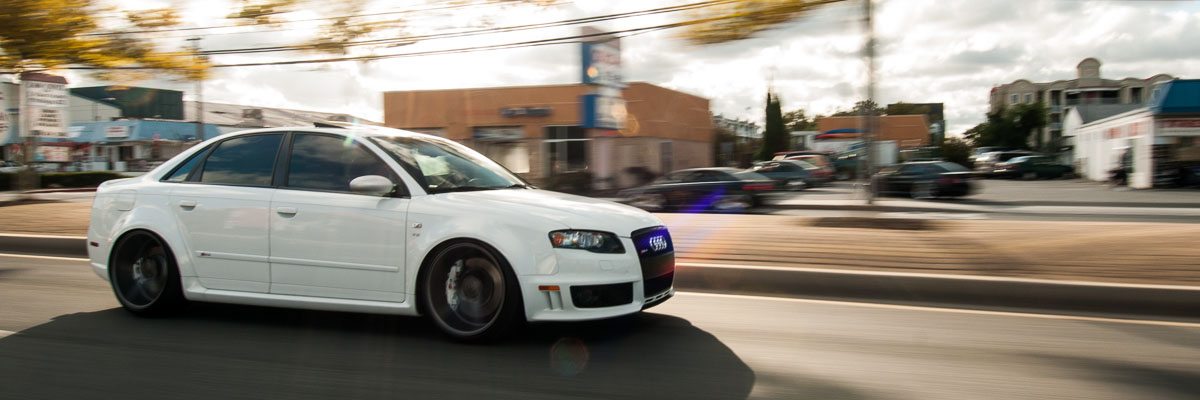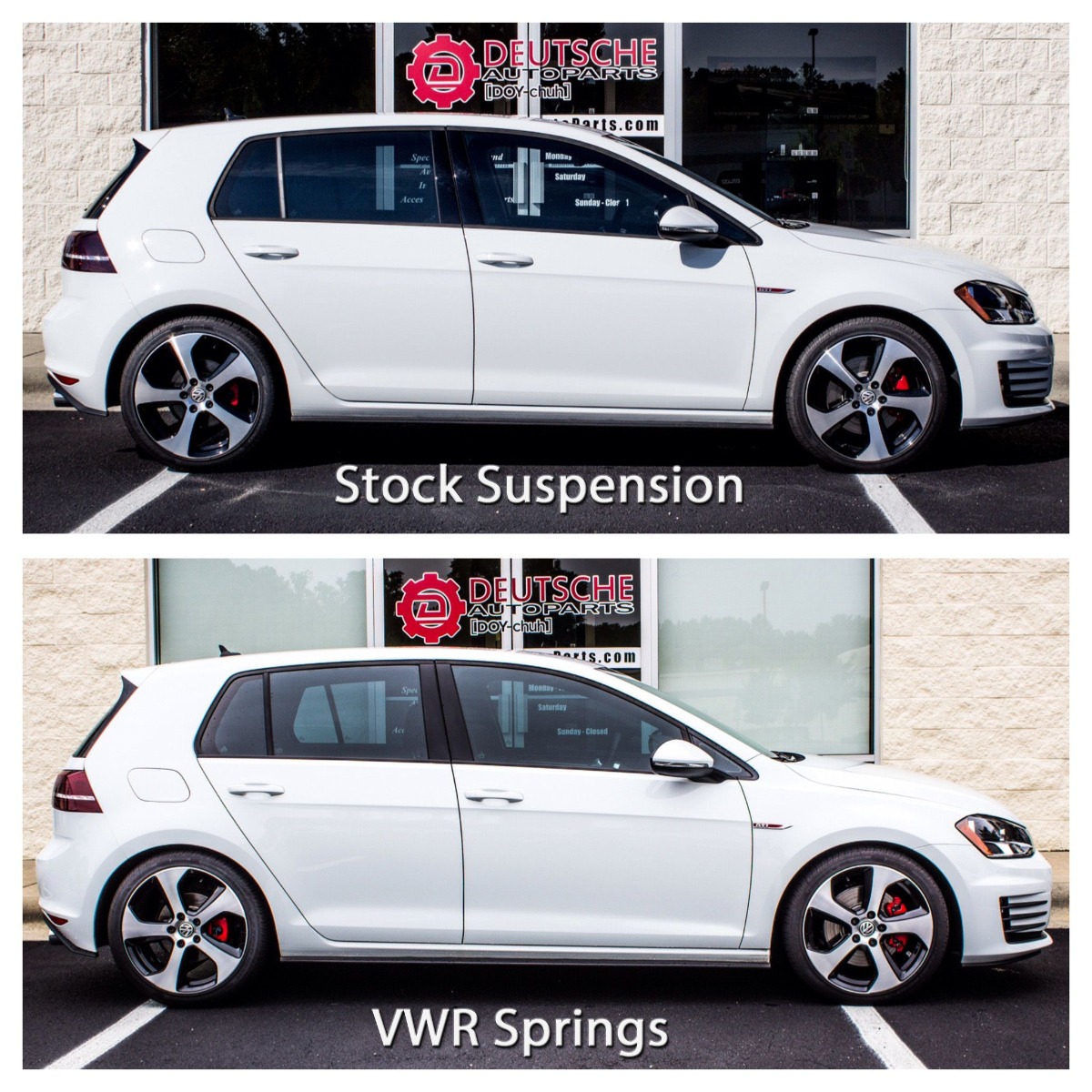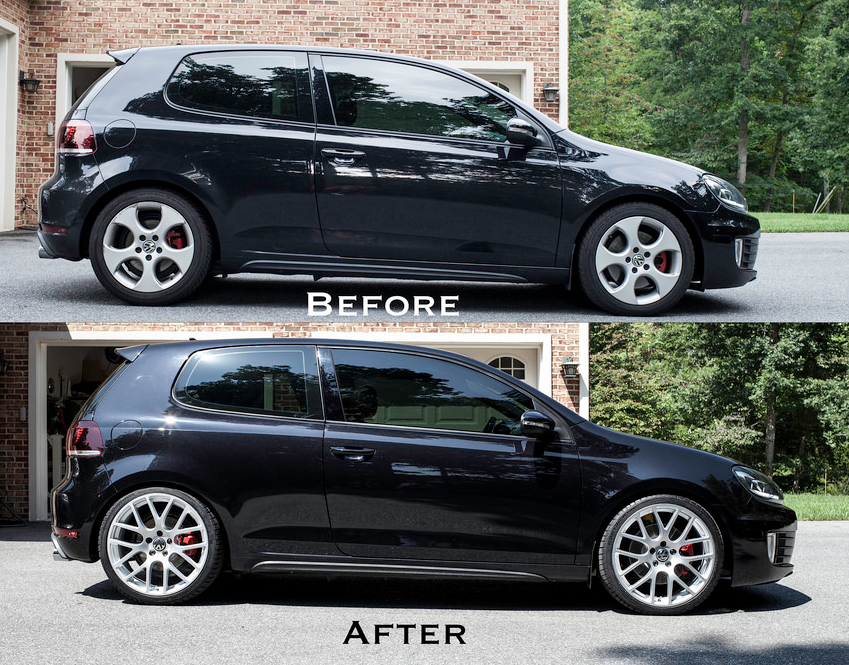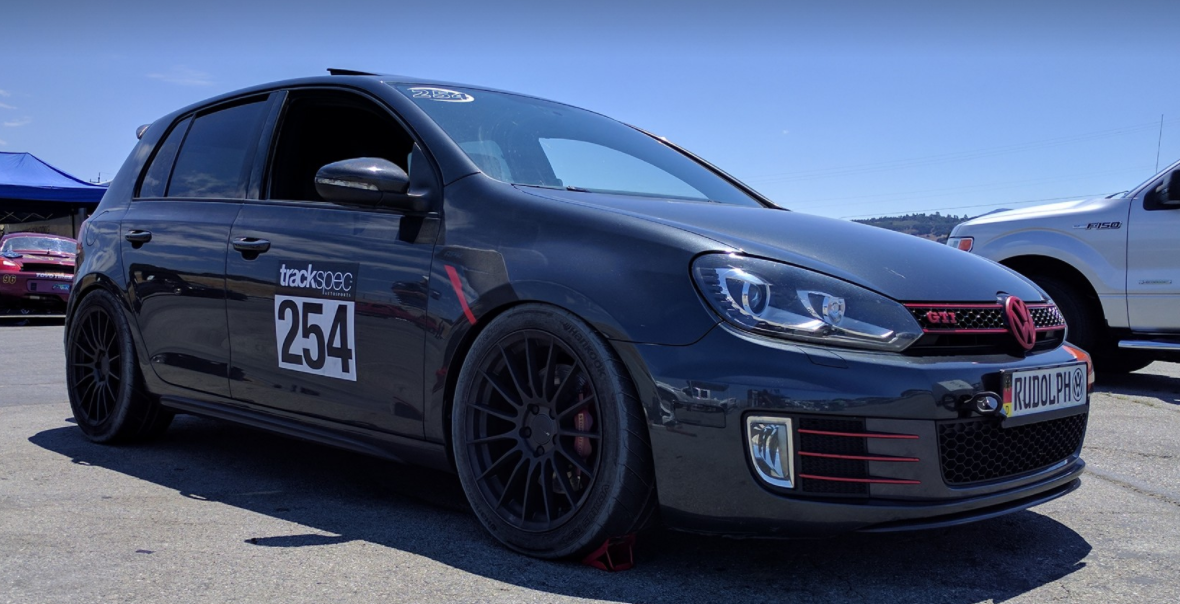A Guide to Going Low for VW and Audi Models


How to Pick the Right Suspension Setup for You and Your VW or Audi
Here at Deutsche Autoparts we are dedicated to helping you pick the right suspension for you and your budget the first time. In order to do that let's go over the different types of aftermarket suspension options available, and their pro's and con's. Due to installation times and install costs, picking the right suspension set up the first time can save you time, money, or both.
 Lowering Springs:
Lowering Springs:
First up we have the most economical approach to aftermarket suspension. Lowering springs will generally range from 175-300 dollars, and will lower the car a set amount. Lowering springs will help you reduce your vehicles ride hide, can offer improvement in ride quality, and will also help to improvement handling through more ideal spring rates for spirited driving. One must keep in mind that if they are lowering their car dramatically over stock, the new ride height can contribute to their stock shock absorbers wearing out prematurely.
Cup Kits:
A cup kit is simply a combination of lowering springs matched with shock absorbers. By matching the shocks and springs you will get ride quality that exceeds that of lowering springs alone. These kits can offer adjustable dampening for fine tuning your cars handling to your liking. Cup kits are a great choice for those that feel they do not need the height adjustment that is offered via a coilover. A proper cup kit can smooth out any weak points associated with your stock suspension, while providing a sportier ride and appearance.
Coilovers:
Coilovers offer the ultimate in spring based performance and adjustment/customization. Coilovers will allow the user to set a wide range of ride heights. This is accomplished by threaded shock bodies with adjustable locking collars that sit under the spring. Often the rear of the car is adjusted via a perch that sits under the rear springs, as the shocks and springs are separate on many modern cars. In addition coilovers can also allow adjustable dampening, rebound, and camber. Most commonly a combination of rebound and dampening adjustment is offered, and is adjusted via the strut mount in the front or rear of the car. Coilovers can even offer lower ride heights while maintaining full spring travel for a smooth ride by offering adjustable shock bodies. This allows users lowers the shock body independent of the spring, as opposed to compressing the spring, allowing full travel.
Coilovers can also come with two different types of springs, linear and progressive. Linear springs offer a single spring rate throughout the spring, and in general will offer stiffer performance than a progressive spring. Linear springs are also much more narrow, and thus more ideal for running aggressive wheel and tire fitments, especially when the car is lowered. Linear spring coilovers are often aided by smaller “helper” springs which help the main spring stay under tension no matter the ride height. Progressive spring coilovers will offer a more street tuned performance that takes away some of the harshness that can be associated with linear spring coilovers. I personally recommend going with coilovers. They allow you to find the perfect ride height for your vehicle and driving style, where as springs are set in stone. This allows you the ability adjust height based around season, or driving activities such as track days and auto-x events.

Air:
Air ride allows the user to adjust their ride height on the fly, as well as offering extreme lowering capabilities. Unlike factory air ride, aftermarket air ride adjusts quickly and offers wider ranges of ride heights. This is accomplished by replacing standard coil springs with heavy duty rubber bellows that inflate and deflate to raise or lower the vehicle. Air ride, while mainly associated with visual tuning, can still provide a sportier ride comparable to coilovers. Air ride installs are much more complicated, requiring air tank(s), compressor(s), air lines, air management systems, water traps, and level sensors to all be wired and installed in order to have a complete and functioning system.
Reminder:
Whenever you're lowering your vehicle it is recommended that you get an alignment done once the vehicle has settled in. Getting an alignment will help prevent premature tire wear caused by a vehicle going out of spec during the lowering process.
















Comments